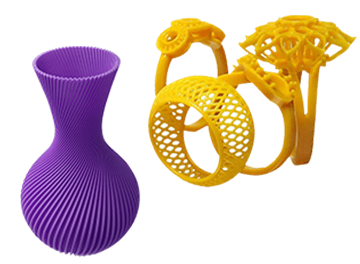- makeITcircular 2024 content launched – Part of Maker Faire Rome 2024Posted 2 weeks ago
- Application For Maker Faire Rome 2024: Deadline June 20thPosted 2 months ago
- Building a 3D Digital Clock with ArduinoPosted 7 months ago
- Creating a controller for Minecraft with realistic body movements using ArduinoPosted 7 months ago
- Snowflake with ArduinoPosted 8 months ago
- Holographic Christmas TreePosted 8 months ago
- Segstick: Build Your Own Self-Balancing Vehicle in Just 2 Days with ArduinoPosted 8 months ago
- ZSWatch: An Open-Source Smartwatch Project Based on the Zephyr Operating SystemPosted 9 months ago
- What is IoT and which devices to usePosted 9 months ago
- Maker Faire Rome Unveils Thrilling “Padel Smash Future” Pavilion for Sports EnthusiastsPosted 10 months ago
Understanding the Mechanics of 3D Printing
3D printing is a cutting-edge technology that enables the creation of three-dimensional objects through a layer-by-layer process. This method of printing starts from a digital model file and uses bondable materials such as metal or plastic powders to produce the final product. The printed object can have any shape and geometric characteristics, making it a versatile tool for various industries and applications.

Requestee for free a quotation
Main Technologies in 3D Printing
The 3D printing process starts with the creation of a digital model using computer-aided design (CAD) software. The design is then imported into the 3D printer, which uses various techniques to build the object. The three most common 3D printing technologies are:
- Fused Deposition Modeling (FDM) – This technique involves heating and melting filamentous hot-melt material, which is then selectively coated onto the worktable by the 3D nozzle according to cross-sectional profile information. After the layer is formed, the worktable is lowered and the process is repeated until the entire object is built.
- Selective Laser Sintering (SLS) – This technology involves spreading a layer of powder material on the worktable and heating it to just below the sintering point using a laser. The control system uses the laser beam to scan the cross-sectional profile of the layer and sinter it to form a solid object. The process is repeated until the entire object is built.
- Stereo Lithography Apparatus (SLA) – This technique involves filling a liquid tank with photosensitive resin and curing it with an ultraviolet laser beam. The resin is solidified in the scanning area to form a layer of plastic sheet. The worktable is lowered and the process is repeated until the entire object is built.
In conclusion, 3D printing technology has revolutionized the way we create and manufacture objects, providing limitless possibilities for designers and engineers to bring their ideas to life. Whether it’s through FDM, SLS or SLA, the process of 3D printing is constantly evolving, leading to new and innovative applications across various industries.

Requestee for free a quotation
Features of 3D Printing Service
3D printing is a versatile and innovative technology that offers a range of benefits and drawbacks for different types of manufacturing. Here are some of the key features and advantages of 3D printing services:
Advantages:
- Flexible Design: 3D printing enables more complex designs than traditional manufacturing methods.
- Rapid Prototyping: 3D printing speeds up the prototyping process, allowing parts to be printed within hours.
- Print on Demand: With print on demand, you can store virtual designs and print as needed, saving on inventory space and costs.
- Strong and Lightweight Parts: 3D printing materials, such as plastic, offer lightweight parts that are strong and can be tailored for specific properties.
- Fast Design and Production: 3D printing can quickly produce parts, with the design process also being faster.
- Minimizing Waste: 3D printing minimizes material waste, saving resources and costs.
- Cost Effective: 3D printing is a cost-effective manufacturing method, with time and material savings.
- Ease of Access: 3D printing services are becoming more accessible, with local providers available for outsourcing.
- Environmentally Friendly: 3D printing reduces material waste, making it an environmentally friendly technology.
- Advanced Healthcare: 3D printing is being used in the medical sector for printing human organs and other advances.
Drawbacks:
- Limited Materials: 3D printing has a limited selection of materials available for printing.
- Restricted Build Size: 3D printers have small print chambers, which limit the size of parts that can be printed.
- Post Processing: Most 3D printed parts require post-processing, which can slow the speed of manufacture.
- Large Volumes: 3D printing is a static cost and may not be cost-effective for mass production of large volumes.
- Part Structure: 3D printing produces parts layer-by-layer, which can result in delamination under certain stresses or orientations.
















